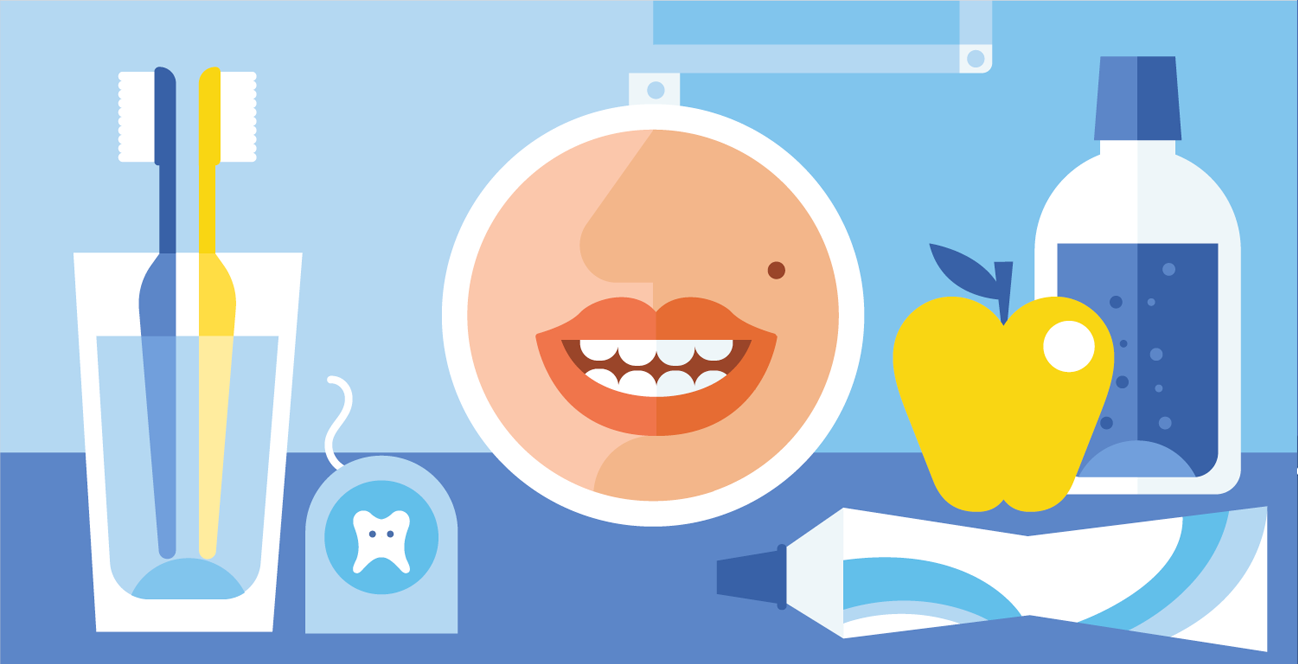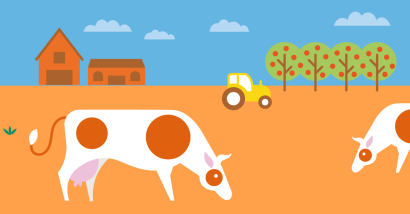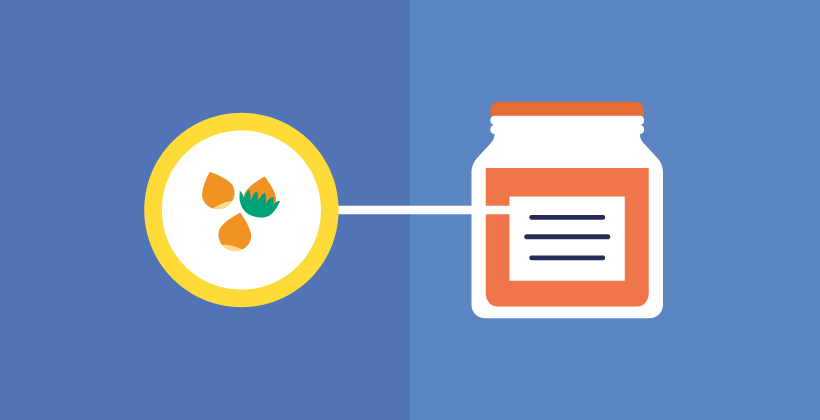Saliva: What Does It Do and What Is Made Of?
Last Updated : 30 December 2010Our saliva is ninety-nine per cent water. The remaining one per cent, however, contains numerous substances important for digestion, dental health and control of microbial growth in the mouth.
The salivary glands in our mouth produce about 1-2 litres of saliva daily. Blood plasma is used as the basis, from which the salivary glands extract some substances and add various others. The list of ingredients found so far in saliva is long, and growing. Just as varied are the many functions, of which only a few major ones will be outlined below.
Food and saliva
Preventing us from choking on food
An important role of saliva during eating is based in its sliminess. During mastication the dry, crumbly or disintegrating food turns into a soft, cohesive lump, the “bolus”.1 This bolus is held together by long, thread-like molecules, the mucins, which get tangled up at their ends. Moreover, mucins bind large quantities of water and thus keep the bolus moist and soft.2,3 This is important for us not to choke on the food or let the oesophagus get damaged by rough food particles.
Taste
Saliva is essential for taste sensation. The taste buds lie hidden in deep, narrow vaults across our tongues that cannot be accessed by dry, lumpy aroma compounds. As an experiment, close your eyes and have a lump of rock sugar or salt placed on your tongue. Differentiating between the two will be even more difficult the drier your tongue. Only after moisturising the lump with saliva are the individual sugar or salt molecules released and we taste sweet or salty. This function of saliva is brought about by its main component, water.
More complex foods such as starch or protein, require further help from our saliva, before we can identify them as tasty. The portfolio of receptors on our taste buds can only bind small molecules and ions, but not large chains of molecules (polymers). This is why a starch molecule - although consisting of millions of single sugars (monosaccharides) - does not taste sweet. To reveal the true nature of the food, our saliva contains digestive enzymes.4 Each enzyme accelerates a specific chemical reaction that would otherwise proceed too slowly for our purposes. Amylase, for example, helps the water molecules in our saliva to split the chemical bonds between the monosaccharides in starch. The individual sugar units released then bind to “sweet” receptors, which relay the message to the brain that this is indeed nutritious food that is safe to swallow. The same holds for proteins, from which proteases in saliva cut individual amino acids, some of which may stimulate the “umami”-receptor (umami = savoury).
Saliva as a builder
The hard matter of our teeth - enamel and dentine - consists of a very hard crystal called hydroxyapatite. Hydroxyapatite is made from calcium, phosphate and hydroxyl ions. Additionally, it contains organic molecules, mainly collagen, and in the case of dentine also cellular projections from odontoblasts (cells that produce dentine).
Source of building blocks
Because of its specific properties water can dissolve out ions from salt crystals. Table salt for example quickly disintegrates in water into its constituent sodium and chloride ions. Although in hydroxyapatite the ions are bound very tightly, in water the crystal would steadily lose ions from the surface and shrink. To reverse this process, our saliva is saturated with calcium and phosphate ions. These occupy the spaces freed up in the crystal lattice and thus prevent continuous corrosion of the enamel surface. If our saliva was constantly diluted with water, the concentration of calcium phosphate would be insufficient and the tooth enamel would start to erode. This happens for example in the so-called nursing bottle syndrome seen in infants. Due to prolonged sucking on the baby bottle, even if only filled with water, the teeth become porous and typical caries on the upper front teeth develops.5 Good oral hygiene including twice daily brushing of teeth with fluoride-containing toothpaste, and minimising prolonged exposure of teeth to drinks with fermentable carbohydrates (e.g. juice, milk, formula) are some of the strategies that may help reduce the risk.6
Neutralisation of acids
Hydroxyapatite only forms when enough hydroxyl (OH-) and phosphate (PO43-) ions are present. Such conditions prevail at alkaline pH (pH>7). Under acidic conditions the OH- ions turn to water and the phosphate ions to mono-, di-, and trihydrogen phosphates. These do not fit into the crystal lattice and are washed away.7 Our saliva prevents this through buffering substances that keep the pH near neutral, i.e. around 7. If the pH is too alkaline over a prolonged period, the hydroxyapatite grows too quickly, leading to scale (dental calculus). In contrast, continued exposure to acidic fluids (pH<7), e.g. when sucking juice from a baby bottle, leads to porous, thin enamel.5
Surface coating
We have seen that the surface of the hydroxyapatite crystal that forms the enamel is sensitive to changes in the composition of saliva and undergoes constant reconstruction. However, our teeth are supposed to stay healthy and functional for many decades. Therefore, a stable environment on the enamel surface would be desirable. Here, too, saliva has a role: components of it, first and foremost the mucins, firmly settle on the crystal surface and create a protective layer.8 This protective layer of mucous molecules, called pellicle, binds water and ions and holds them in place.9 Additionally, it evens out irregularities in the crystal surface and thus keeps it smooth and lubricated.
Saliva in the biotope of the oral cavity
Our cohabitants
The many moist and warm surfaces in our mouth serve as an ideal habitat (biotope) for microorganisms, mainly bacteria, but also yeasts (e.g. Candida) and protozoa (e.g. Entamoeba gingivalis).10 In addition to the ideal climate, these organisms also benefit from the generous “feeding” that they receive through our regular food intake.
Surviving in the biotope of the oral cavity
Bacteria only stand a chance to survive in our mouth if they manage to hold on and not get swallowed. A few bacterial species, especially streptococci, can bind directly to the pellicle. On the one hand this happens via positively charged calcium ions that mediate between the negatively charged surfaces of the pellicle and the bacteria. On the other hand, there is also direct, specific binding of bacterial proteins (lectins) to the pellicle structure.
Already five minutes after the tooth surface has been cleaned, the first bacteria start attaching to the newly formed pellicle. They then proliferate by cell division to form a biofilm. This first layer of “pioneers” in turn allows other bacteria to attach. After two to three hours, a plaque visible to the naked eye is established. In protected areas of the mouth, bacterial colonies over the next days grow into thick, complex three-dimensional structures known as mature plaque. If the plaque is undisturbed by tooth brush or floss, it can grow as thick as one millimetre or 300 bacteria.11 In such large colonies, especially the lower layers facing the tooth experience a lack of oxygen. To be able to continue extracting energy from food, these bacteria need to switch to fermentation, a process that yields organic acids instead of carbon dioxide and water. The resulting acidic microclimate dissolves the hydroxyapatite crystal and caries ensues. After about a week, the plaque begins to mineralise: calcium and phosphate from saliva are deposited in the bacterial colony and harden it, leading to dental calculus.
Plaque as thick and firm as this can only form in places in the mouth where bacteria can proliferate undisturbed over many days. The constant flow of saliva prevents this on most dental surfaces simply by washing away loosely attached bacterial layers. Even in people who neglect brushing their teeth over a prolonged period of time, dental plaque and calculus do not form on exposed surfaces. However, niches such as the interdental space and gum pockets provide sufficient protection against the mechanical rinsing function of saliva.
But saliva can do even more: the proteins that form the pellicle on the tooth surface and to which bacteria can hold on, are also still present in a soluble form in saliva. Bacteria cannot actively discern whether the mucin they bound to is fixed to the tooth surface or free floating in saliva and washed into the stomach with the next swallowing process. Many bacteria are thus entrapped and swallowed. In addition, saliva contains the enzyme lysozyme that attacks and perforates the cell walls of certain bacteria, eventually making them burst. Then there are antibodies (immunoglobulin A) secreted into saliva that prevent pathogens from settling in the oral cavity.12
Our saliva promotes bacteria that do not produce acids, and it helps kill undesirable and excess bacteria with the use of nitrate. Nitrate is an important nitrogen source for plants and is therefore used as fertiliser. Many plants, especially salads and vegetables, store nitrate as a reserve in times of need. Our cells do not have much use for nitrate, which is why dietary nitrate floats unused in our blood until we excrete it via urine. Some bacteria, however, can use nitrate (NO3-) instead of oxygen for respiration, turning it into nitrite (NO2-). When nitrite gets in contact with acid it becomes a strong poison that can kill bacteria in close vicinity. Our salivary glands actively accumulate nitrate from the blood and secrete it with the saliva into the mouth. There it has several functions: it helps those bacteria that can breathe nitrate instead of oxygen (denitrifying bacteria). When oxygen is scarce they produce nitrite, but not acids, so they do not cause caries. If a denitrifying bacterium lives next to an acid-producing bacterium, the latter will be killed through the reaction of its own acid with nitrite, resulting in reduced acid production. Less acid means better tooth protection.13 Furthermore, the nitrite we swallow with the saliva reacts with gastric acid and can kill potential pathogens in the stomach that may have been taken in orally.14
Conclusions
So what if it was really only water accumulating in our mouth when salivating? We would choke much more often on food, because the cohesive bolus would not form. Macromolecular nutrients such as protein and starch, but probably also fat, would have a neutral taste. We would only be able to taste pre-digested food that already contains individual amino acids and sugars. The calcium and phosphate ions leached from hydroxyapatite through the action of water and unbuffered acids would not be replaced. The dental enamel would be demineralised and become porous. Bacteria could spread undisturbed and would cause caries through increased production of acids.
Further information
Article shortened and slightly modified from Dr Rainer Wild Stiftung, Internationaler Arbeitskreis für Kulturforschung des Essens. Mitteilungen 2008, H. 16, S. 34–42.
References
- Pedersen AM, et al. (2002). Saliva and gastrointestinal functions of taste, mastication, swallowing and digestion. Oral Diseases 8:117–129.
- Offner GD & Troxler RF (2000). Heterogeneity of High-molecular-weight Human Salivary Mucins. Advances in Dental Research 14:69–75.
- Humphrey SP & Williamson RT (2001). A review of saliva: Normal composition, flow, and function. Journal of Prosthetic Dentistry 85:162–169.
- Mese H & Matsuo R (2007). Salivary secretion, taste and hyposalivation. Journal of Oral Rehabilitation 34:711–723.
- Schilke R. (1997). Das Nursing-Bottle-Syndrom. Monatsschrift Kinderheilkunde 145:693–698.
- EUFIC (2006). Dental health.
- Robinson C, et al. (2000). The Chemistry of Enamel Caries. Critical Reviews in Oral Biology and Medicine 4:481–495.
- Wetton S, et al. (2006). Exposure Time of Enamel and Dentine to Saliva for Protection against Erosion: A Study in vitro. Caries Research 40:213–217.
- Lendenmann U, et al. (2000). Saliva and Dental Pellicle – A Review. Advances in Dental Research 14:22–28.
- Prieto-Prieto J & Calvo A (2004). Microbiological Bases in Oral Infections and Sensitivity to Antibiotics. Medicina Oral, Patología Oral y Cirugía Bucal 9 Suppl:11–18.
- Kolenbrander PE, et al. (2006). Bacterial interactions and successions during plaque development. Periodontology 2000 42:47–79.
- Rudney JD (2000). Saliva and Dental Plaque. Advances in Dental Research 14:29-39.
- Doel JJ, et al. (2004). Protective effect of salivary nitrate and microbial nitrate reductase activity against caries. European Journal of Oral Sciences 112:424–428.
- Winter JW, et al. (2007). N-Nitrosamine Generation From Ingested Nitrate Via Nitric Oxide in Subjects With and Without Gastroesophageal Reflux. Gastroenterology 133:164–174.



